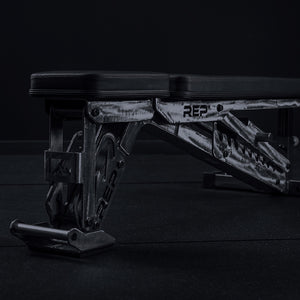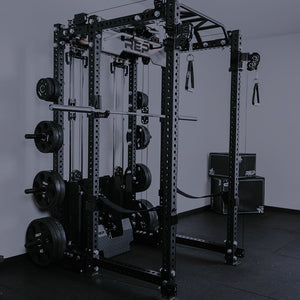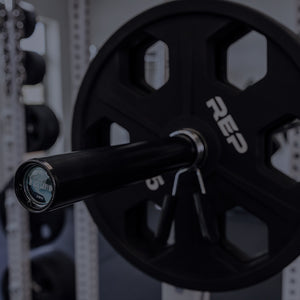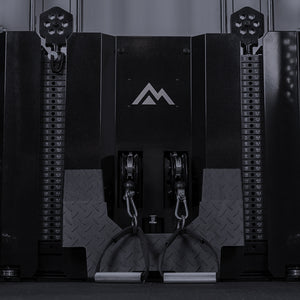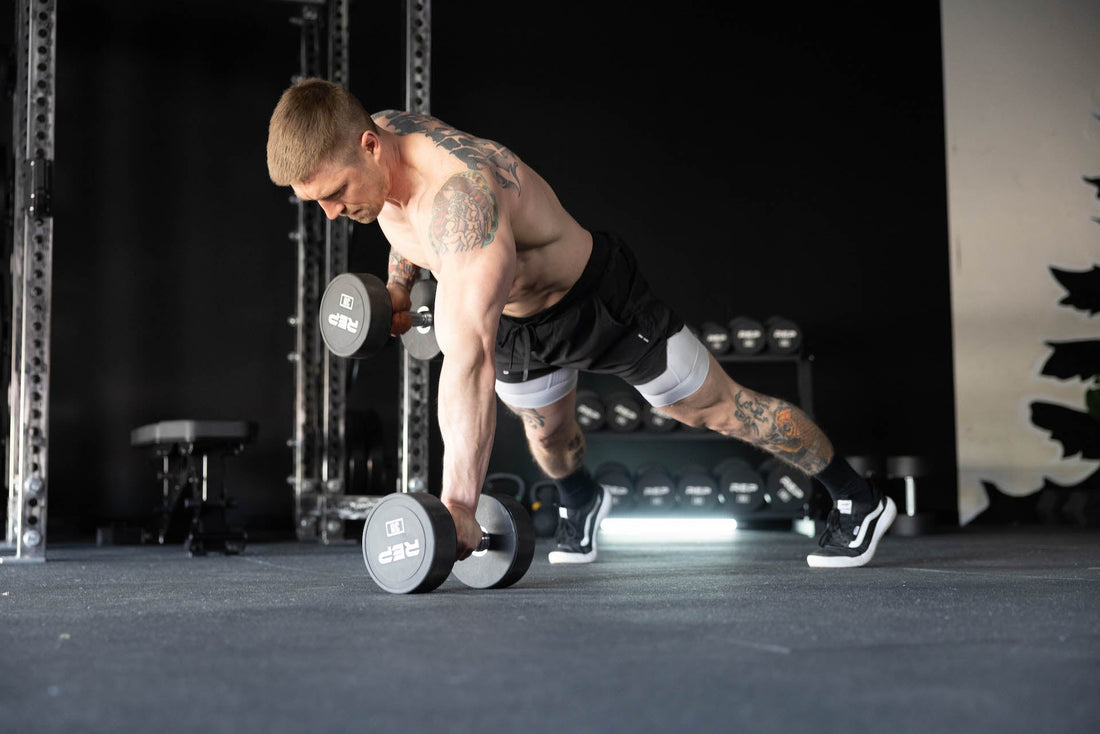
For whom the (dumb)bell tolls
Your back muscles play a vital role in your overall strength, posture, and stability. Whether you’re looking to improve your posture, boost your lifts, or simply feel stronger, incorporating a solid dumbbell back workout into your routine is essential.
Why Should You Train Your Back?
Your back muscles aren’t just for aesthetics — though a jacked back will probably turn some heads. Training your back improves posture, reduces the risk of injury, and improves functional strength for everyday activities. (More than a million workers injure their back every year — one of five workplace injuries, according to the Bureau of Labor Statistics.)
A well-developed back also balances out your physique, preventing the common issue of overdeveloped chest and shoulders.
A strong back can also improve your other lifts. There’s a reason for the popular powerlifting saying, “Big back, big total.”
This isn't just bro science. Research backs it up. A strong back supports the barbell during squats and prevents rounding during deadlifts. Stronger lats and traps contribute to better control in pulling exercises like rows and pull-ups, which translates to better overall lifting mechanics. A big, joocy back also reduces the risk of injuries by improving core stability and load distribution.
Why Use Dumbbells to Build Your Back?
There’s a role for all different kinds of gym equipment, but dumbbell back exercises offer some advantages over machines or barbells. For example:
-
Greater Range of Motion: Dumbbells can allow for a deeper stretch and contraction.
-
Improved Symmetry: Unlike a barbell, each side works independently, which can reduce, prevent, or correct muscle imbalances.
-
Versatility: Dumbbells are super versatile and can be used for a ton of different kinds of movements.
What Are the Key Muscles in Your Back (And How to Target Them)?
Your back is made up of several different muscle groups. Note: While you can emphasize a specific muscle to a degree, your body works as a system, and multiple muscles often engage during any movement.
Latissimus Dorsi (Lats): The broad, wing-like muscles on your sides. Best targeted with exercises like pullovers and rows.
Trapezius (Traps): The muscles extending from your neck to your shoulders and mid-back. Bent over rows and shrugs work wonders here.
Rhomboids: Located between your shoulder blades, these muscles are activated during fly variations.
Erector Spinae: The muscles along your spine, crucial for stability and strength. Dumbbell deadlifts are great for these.
The 10 Best Dumbbell Back Exercises
Looking for workout inspo? Here are 10 (of many) back exercises with dumbbells.
Not sure how to put them together in a workout? It doesn’t have to be super difficult.
-
Start with a warm-up. Make sure the warm-up is dynamic and relevant (e.g., light rows or resistance band pull-aparts for a back workout). After dynamic stretches (like cat-cows or thoracic twists), move into light activation exercises such as: Resistance Band pull-aparts, scapular wall slides, and light dumbbell rows.
-
Not sure what dumbbells to choose? Adjustable dumbbells are always a solid bet. They take up minimal space and can save you money over buying the whole set.

-
Then pick four to five of these exercises, ideally that work different sections of your back. Aim for four sets of 8-12 reps. For deadlifts and heavier weight, you may prefer a lower rep range of 6-8. This is great for strength-focused lifts, especially for heavier, compound movements like deadlifts.
-
As for the order of the lifts you pick, try this:
-
-
Start with compound lifts (deadlifts, pull-ups, barbell rows).
-
-
-
Then do your accessories (rows, lat pulldowns).
-
-
-
Finish with isolations (rear delts, face pulls, straight-arm pulldowns).
-
-
Cool off when you’re done with a good stretch and foam roller. Yes, you need to cooldown. Just doooo it.
Bent-Over Dumbbell Rows

How: Hinge at the hips, keep your back flat, and row the dumbbells to your waist.
Why: Targets the lats, traps, and rhomboids for overall back development.
Single-Arm Dumbbell Row

How: Here’s how to do a proper single-arm dumbbell row.
Why: Isolates each side for balanced strength.
Dumbbell Deadlift
How: Hold dumbbells in front of your thighs, hinge at the hips, and lower them to your shins.
Why: Strengthens the erector spinae and engages the glutes and hamstrings.
Reverse Fly
How: With a slight bend in your knees and a hinged posture, raise the dumbbells laterally.
Why: Targets the rear delts and rhomboids for better posture.
Dumbbell Pullover
How: Lie on a bench, hold a dumbbell with both hands, and lower it overhead.
Why: Stretches and strengthens the lats and chest.
Renegade Rows

How: In a plank position, row one dumbbell at a time.
Why: Engages the lats, traps, and core simultaneously.
Chest-Supported Dumbbell Row

How: Lie face down on an incline bench and row the dumbbells.
Why: Reduces strain on the lower back.
Shrugs
How: Hold dumbbells at your sides and shrug your shoulders upward.
Why: Isolates the traps for strength and size.
Dumbbell Y Raise
How: Hinge forward, then raise the dumbbells in a Y shape.
Why: Strengthens the lower traps and improves shoulder stability.
Suitcase Deadlift
How: Perform a deadlift with one or two dumbbells, keeping your torso upright.
Why: Enhances grip and core stability while targeting the back.
Learn More
Here are some more ways to use dumbbells in your workouts:

NEWSLETTER SIGNUP
Product launch information, promotions, blogs, and REP news.

